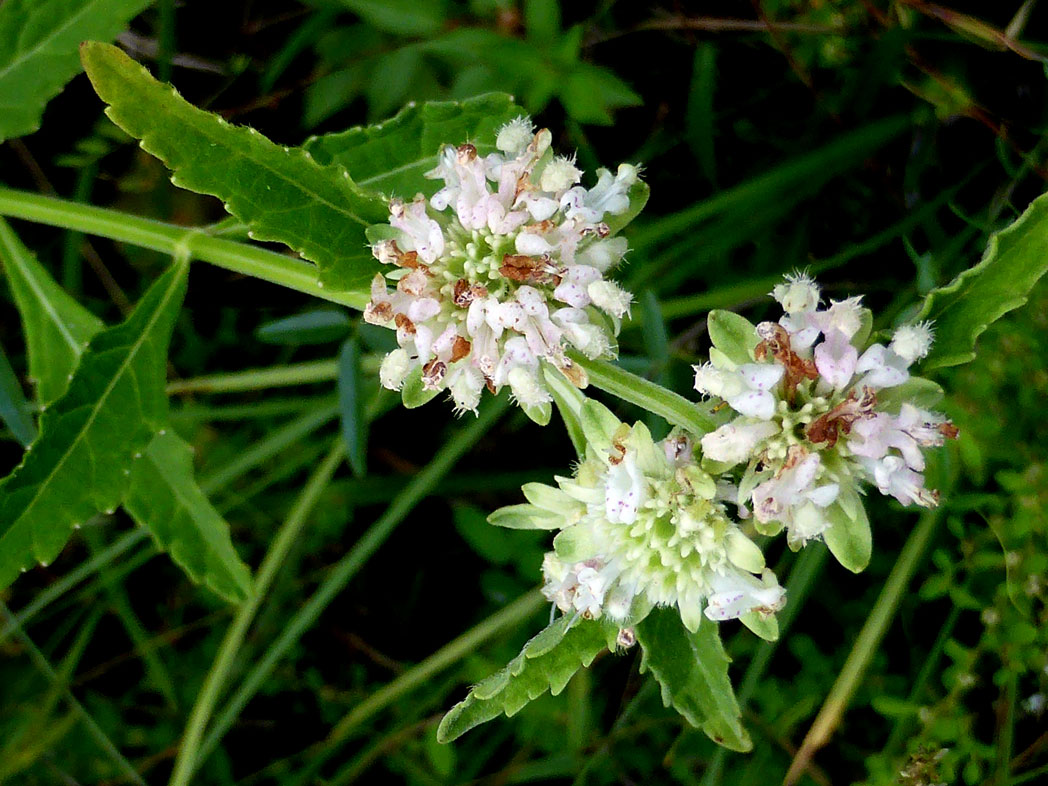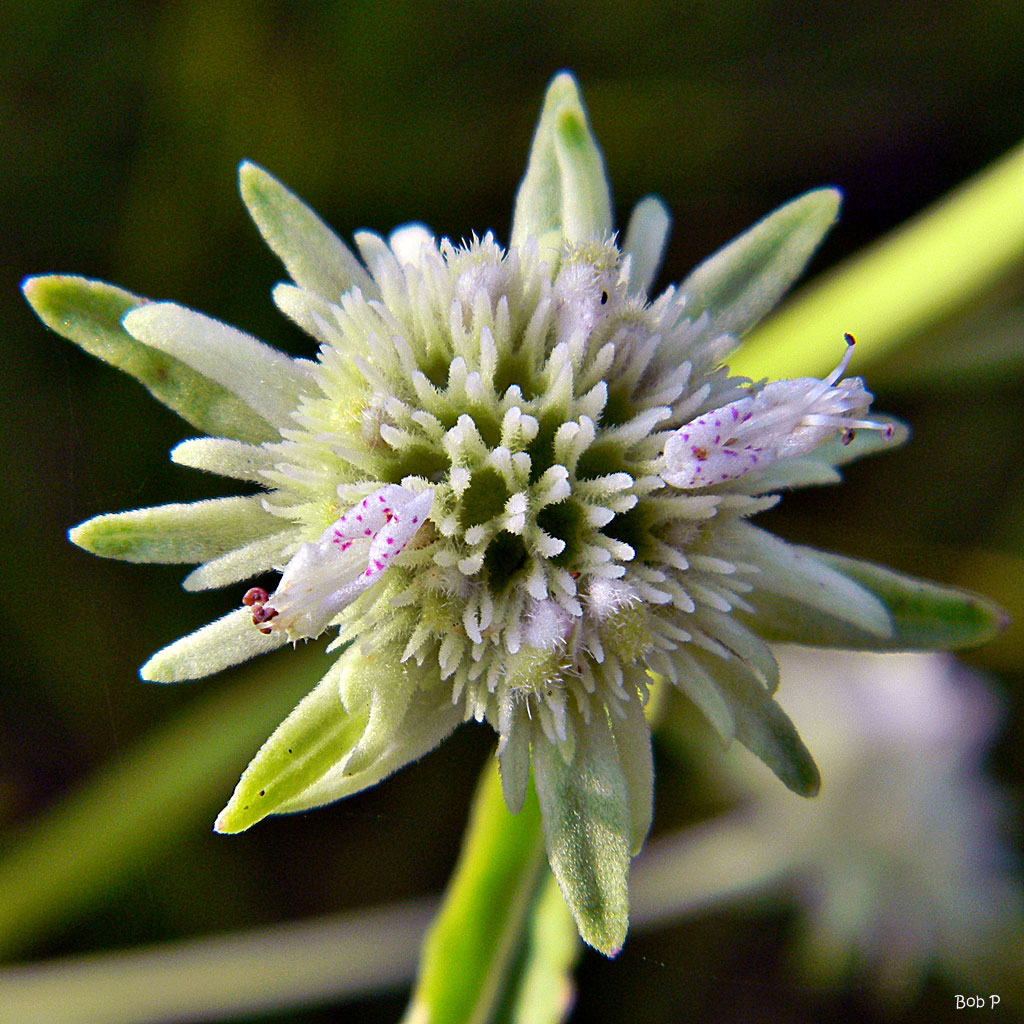Clustered bushmint
Pictured above: Clustered bushmint (Hyptis alata) by Bob Peterson (CC BY 2.0). Click on terms for botanical definitions. View post as a PDF
Clustered bushmint occurs naturally along pond and swamp margins, in moist roadside ditches, and in wet prairies and pinelands. It typically blooms spring through fall, but may bloom year-round. The small flowers attract a variety of pollinators, including bees, butterflies, wasps and occasionally hummingbirds. When crushed, the plant emits a musky fragrance, giving it another common name, Musky mint.
Clustered bushmint’s five-lobed flowers are white with pinkish-purple spots. The lower lobe is yellowish and conceals four stamens that emerge and deposit pollen when a pollinator lands on the lobe. Flowers are born in tight, rounded clusters on stalked, axillary heads. Although each flowerhead bears many flowers, only a few open at the same time. Each inflorescence is subtended by pale green, lightly pubescent bracts. Leaves are lanceolate with serrated margins. They are oppositely arranged. Lower leaves are larger and petiolate; upper leaves become reduced in size and sessile. Stems are square, stout and may be green or reddish-purple. Fruits are tiny capsules.

Clustered bushmint flowers and serrated leaves. Photo by Eleanor Dietrich
The genus name Hyptis is from the Greek hyptos, meaning “turned back.” It likely refers to the lower lobe and stamens that bend down after pollination. The species epithet alata is from the Latin alatus, or “winged.”
Family: Lamiaceae (Mint family)
Native range: Throughout Florida
To see where natural populations of Clustered bushmint have been vouchered, visit florida.plantatlas.usf.edu.
Hardiness: Zones 8A–10B
Lifespan: Perennial or short-lived perennial
Soil: Moist to wet, well- or poorly drained, sandy or calcareous soils
Exposure: Full sun to partial shade
Growth habit: 2–4’ tall
Propagation: Seed
Garden tips: Fast-growing Clustered bushmint is suitable moist wildflower gardens and naturalistic and restoration landscapes. It does not tolerate salt or extended periods of drought.
Plants are occasionally available from nurseries that specialize in Florida native plants. Visit www.PlantRealFlorida.org to find a nursery in your area.

